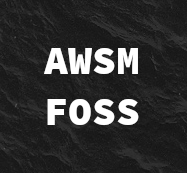-
So you need to wait for some Kubernetes resources?
Want to wait for some Kubernetes resources and don't want to write a full reconciliation loop/operator? Here's how to hack it.
-
The Deployment Spectrum
A quick writeup on the 'deployment spectrum' and it's history, as I see it.
-
Wicked Landing Gear
I stood on the shoulders of the giants over at wickedtemplates (https://www.wickedtemplates.com) who open sourced wickedblocks (https://blocks.wickedtemplates.com/) and built their tailwind templates into individual components powered by lit-html, which is now called Lit (https://lit.dev/)
-
Novice Arch Pitfall: watch out for kernel mismatches (after system updates)
Watch out for kernel version mismatches after system updates (i.e. updates of the 'linux' package) -- spooky behavior can occur if you're not careful
-
Level 1 Automated K8S Deployments With GitLab CI
You may not need Flux/ArgoCD or any fancy automated reconciliation loop deployment process just yet! Plain old CI runners work quite well for simple automated deployments (this approach powers this blog right now!).
-
Postgres Tip: Covering with primary key indices
Some quick code (PG migrations) to enable converting an auto-generated postgres primary key index to a covering index
-
Paxosmon 2: The Paxos Journey Continues
A few more Paxos papers to take a gander at -- Quorum reads, Compartmentalization, Matchmaking and Pigs. The Paxos family of consensus protocols (and their papers) are as colorful as they ever were.
-
Years later, REST-ish Services in Haskell Part 4
Part 4 of a series on how I write REST-ish web services in Haskell with a dash of robustness
-
Setting Up SES With Pulumi
A step by step guide on how to set up SES with Pulumi
-
Stuffing both SSH and HTTPS on port 443 with stunnel, sslh, and Traefik
A small exploration and guide (with repo) into exposing SSH to a container in a Pod over port 443 (which is normally used for HTTPS).
DDG search drop in powered by ddg.patdryburgh.com

